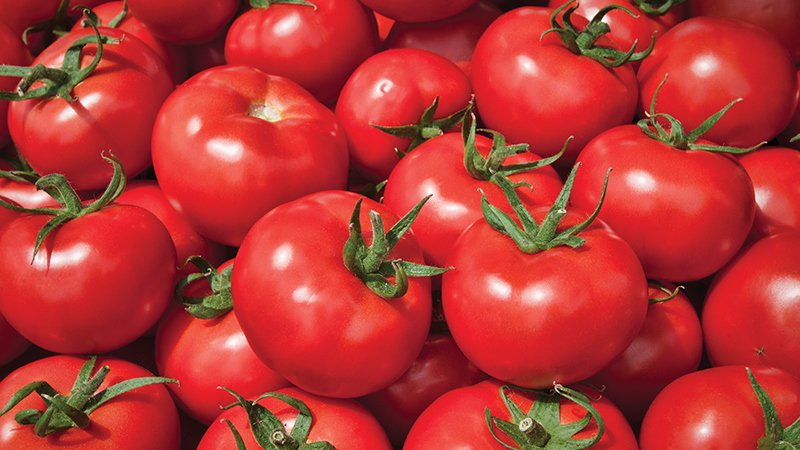Achieve Consistent Stone Fruit Production With High Tunnels
Editor’s note: Production under high tunnels is often thought to be strictly focused on berries or cherry trees. However, Greg Lang of Michigan State University (MSU) talks with American Fruit Grower about research being conducted on stone fruit under high tunnels and the benefits of covered systems, as well as current research on sweet cherries.
Q: What new research is being conducted on stone fruit grown under high tunnels?
A: The majority of high tunnel tree fruit research has focused on sweet cherries. I only know of one commercial orchard operation using tunnels for other stone fruits (Red Jacket Orchards in New York).
Since we began studying high tunnel cherry production in 2005 (at the MSU Clarksville Research Center and the MSU Southwest Michigan Research & Extension Center near Benton Harbor), we have shown that protected production is critical for assuring consistent annual production by minimizing rain-induced fruit cracking, as well as promoting large fruit size and improved tree growth, reducing the incidence of some critical diseases and insects (like cherry leaf spot and Japanese beetle), increasing the potential to protect from spring frost, and providing the potential for earlier ripening for higher value niche markets.
Thus, we have expanded our focus to ask whether high tunnels can add value to other stone fruits that are challenging to grow consistently in the Midwest/Great Lakes/Atlantic fruit-growing regions. In 2008, we removed some of our original tunnel cherries (at the MSU Clarksville Research Center) and planted apricots. These grew well and produced better in the tunnels due to less spring frost damage.
With funding first from the Michigan State Horticultural Society and then from a USDA Small Farms grant (in partnership with Terence Robinson at Cornell University), we removed the remaining cherries as well as those preliminary apricots at Clarksville, and replanted in 2011-2012 with a wide range of apricot and aprium, plum and pluot, and nectarine varieties. Since there are no dwarfing stone fruit rootstocks comparable to Gisela 3 or Gisela 5 in cherries, a key research focus is the examination of canopy training systems to optimize orchard space, canopy light, and harvest labor efficiency in high tunnels.
So, besides examining the tunnel productivity and quality of many different varieties, we are testing and developing very narrow “fruiting wall”-type orchard systems, including the very high-density super slender axe (SSA), and the high-density upright fruiting offshoots (UFO), tall spindle axe (TSA), and palmette (PAL) canopy architectures.
Q: What are you finding with the new research on stone fruit under covering systems?
A: The work to date has largely centered on establishment of the different canopy architectures; measurements this fall will begin to reveal how well high-density tree spacing and canopy training methods are moderating tree vigor in the absence of dwarfing rootstocks.
The first significant yields will be in 2014; the second- and third-leaf trees flowered well this year, but since our focus was on completing development of the canopies, we were not equipped to protect from the Mothers’ Day frost we experienced, so no yield data were taken. The scattered fruit that were borne in the narrow canopies were delightfully easy to pick.
Q: How are high tunnels being compared to other covering systems for stone fruits?
A: Our stone fruit work is focused entirely on high tunnels at this point, with hopes of improved protection from spring frosts and better tree health due to a reduced incidence of certain diseases, particularly bacterial or fungal diseases spread by rain. In sweet cherries, we have added three new covering systems for comparison to high tunnels, including 1) a programmable retractable roof and gutter structure that can optimize light transmittance, 100% rain protection, growing degrees heat accumulation in the spring, and venting of excessive heat in the summer, 2) a passively vented plastic tent system with poles and cables, and 3) a gutterless retractable roof system that channels rainwater to periodic drainage holes in the covers.
Most multibay high tunnels don’t provide 100% rain protection unless gutters are installed (which prevent venting of excessive heat) or orchard floor drain tiles are installed.
Q: Are you seeing any noticeable findings with these studies?
A: Each system studied thus far with sweet cherries provides a marked improvement over non-protected production, but at varying costs of installation and management, and with varying strengths or weaknesses with respect to secondary effects like venting of heat, or protection from frost or wind or insects or diseases.
We anticipate similar results with the other stone fruits, that is, growers will need to identify what advantages are most important to them (e.g., earlier ripening? 100% rain protection? Spring frost protection?) to weigh against the various additional costs for each type of protection system.
Q: What type of advice do you have for stone fruit growers thinking about using a covering system?
A: First, read everything possible about what work has been done thus far. Think about what advantages are most important for their desired markets (farm market? pick-your-own? wholesale? organic?). Start with a moderate installation, such as 1 acre, to gain management experience with their own climate, soils, and tree growth responses. Attend Extension meetings and workshops on protected tree fruit production and ask a lot of questions.
Q: What’s next for the research?
A: Next for the retractable roof cherry research is to develop some fundamental plant growth response data to optimize plant growing conditions dynamically through each phase of production, such as flowering, fruit set, rapid fruit growth, ripening, and postharvest building of flowering sites and resources for the subsequent year.
Next for the protected stone fruit research is comparing full fruiting production data (from bloom through harvest) of the various canopy systems under the tunnels compared to the unprotected trees in the plots, and documenting differences in pests and diseases as well as tree vigor management.









